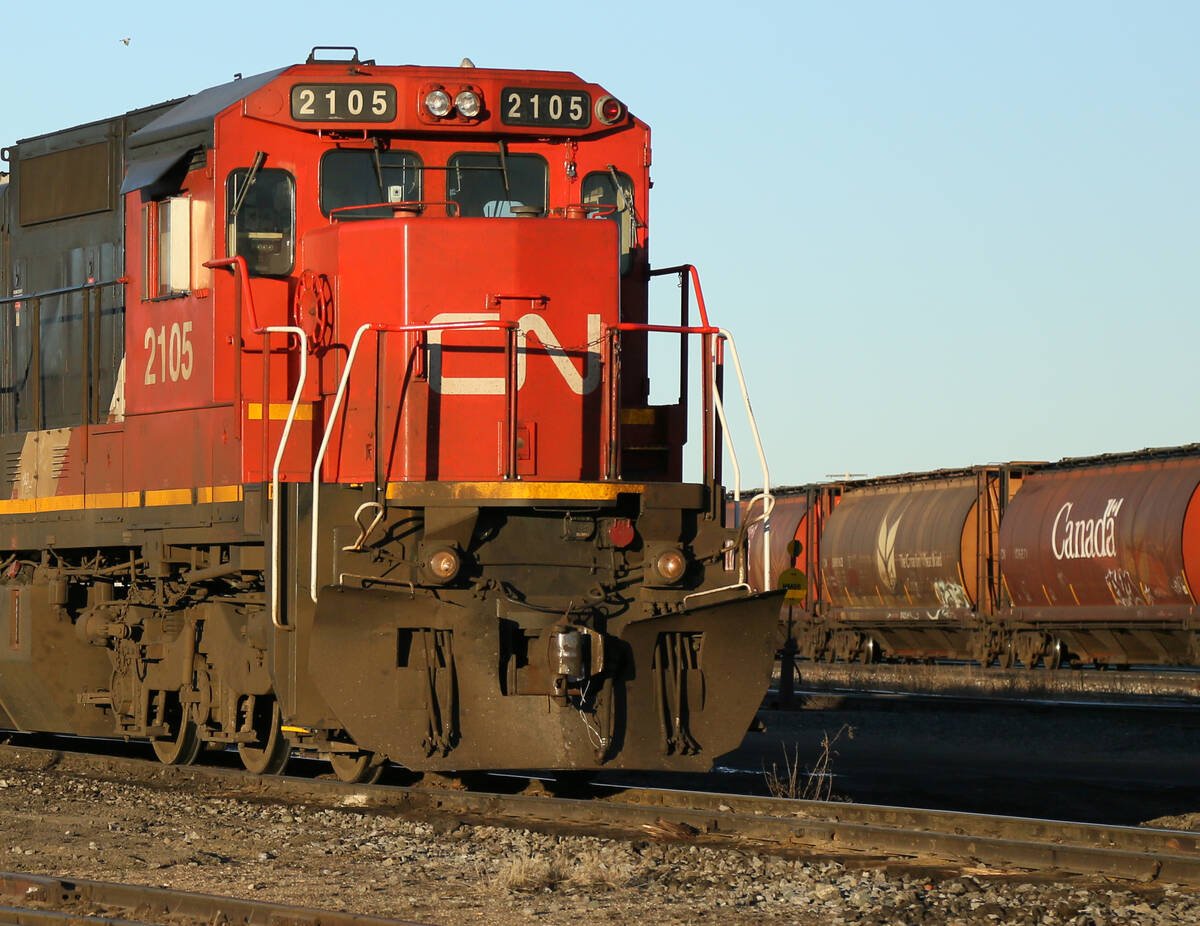SASKATOON — Canadian National Railway moved a record volume of grain in 2024-25.
The company transported 31 million tonnes of grain and processed grain products for the crop year that ended July 31, more than one million tonnes more than the previous record.
“This achievement, which included robust movement of canola and wheat, was delivered despite significant headwinds, including prolonged port labour disruptions and early-onset extreme cold weather,” CN president Tracy Robinson said in the company’s newly released 2025-26 CN Grain Plan.
Read Also

Genesis Fertilizers seeks government funding
Genesis Fertilizers is actively seeking funding from government and a strategic partner. The company dispelled a rumour that DL E&C has abandoned the project.
Canadian Pacific Kansas City Limited transported more than 27 million tonnes of Canadian grain and grain products, the highest volume since the record setting year of 2021-22, according to the company’s 2025-26 Grain Service Outlook Report.
Wade Sobkowich, executive director of the Western Grain Elevator Association, said there are two components to grain movement that are important — volume and precision.
“The increase in capacity is important, but it has to go along with moving it when it needs to be moved,” he said.
That did not happen in 2024-25. It was the worst year for weekly rail car order fulfilment since the industry started tracking that statistic a decade ago.
For instance, only 31 per cent of rail car orders were filled by both railways in Week 29 of the crop year, according to data provided by the Ag Transport Coalition. That was the low point of the year.
“They eventually made that up, but it happened outside the peak period,” said Sobkowich.
“That’s where we hope we’re going to see an improvement in the upcoming crop year.”
CN expects to move 27 to 29.5 million tonnes of grain in the current crop year, which would be well below its maximum capacity of 36 million tonnes.
It plans to move up to 7,800 cars per week (744,000 tonnes) outside of winter and 6,250 cars (595,000 tonnes) during winter.
CPCK expects to move up to 34 million tonnes of grain and grain products, a seven million tonne increase from the crop year that ended July 31.
It plans to provide the capacity required to move up to 685,000 tonnes of grain on average each week when the Port of Thunder Bay is open (generally from August through early-January and from April to July).
When the port is closed, it plans to supply the capacity to move up to 525,000 tonnes per week.
CN is forecasting 70 million tonnes of production for the eight major grains, oilseeds and pulses grown in Canada in 2025.
CPCK said Agriculture Canada is forecasting 70 million tonnes of total western Canadian grain production, but its grain customers are indicating it could be 73 million tonnes.
Sobkowich thinks the railways should be preparing to move a crop that is the same size as last year’s crop.
CN is forecasting 41.39 million tonnes of exports of the eight major crops, a 5.33 million tonne drop from the crop year that just ended.
Both railways indicated that there are several factors that could alter their projections, including labour disruptions and harsh weather.
CN said potential gaps in service could be avoided if grain customers provided the railway with better forecasting and communication.
“While some customers provide detailed and reliable eight-week forecasts, others may offer projections that are less consistent, less detailed or, occasionally, customers do not provide them at all,” the railway said in its Grain Plan.
Sobkowich bristled at that suggestion.
“It feels like they are making excuses before the event happens,” he said.
Every grain company signs service contracts with the railways in advance of the new crop year, outlining what their anticipated demand will be on a week-by-week basis, he said.
And there is “constant communication” throughout the year to ensure the railways deliver what they need.
CN mentioned that ongoing global trade friction is also making it “increasingly difficult to plan forward.”
CPCK also talked about shifting trade routes.
“With grain and other customers looking to diversify end markets amid trade policy uncertainty, CPKC is uniquely serving as a land bridge between Canada and Mexico,” CPKC president Keith Creel said in a press release accompanying its Grain Service Outlook.
Sobkowich said the grain has to go somewhere. If one market puts up a barrier, it will move to another market.
“For the most part, most of the grain wants to go through the West Coast,” he said.
“And that’s not going to change, so that’s where we need to see maximum capacity from the railways.”
CPKC wants Ottawa to introduce 100 per cent immediate depreciation for supply chain capital investments to become competitive with U.S. policy.
It also wants the federal government to increase Canadian grain and other exports to Mexico, address the challenge of frequent labour disruptions and improve loading of grain vessels during periods of inclement weather at Port of Vancouver terminals.
CN said new federal labour regulations mean the railway needs approximately 15 per cent more people to move the same amount of freight, which increases costs to customers.
It is pushing for accelerated capital depreciation measures and regulatory stability to unlock private infrastructure funding.
Both railways strongly oppose reinstating extended interswitching.
















